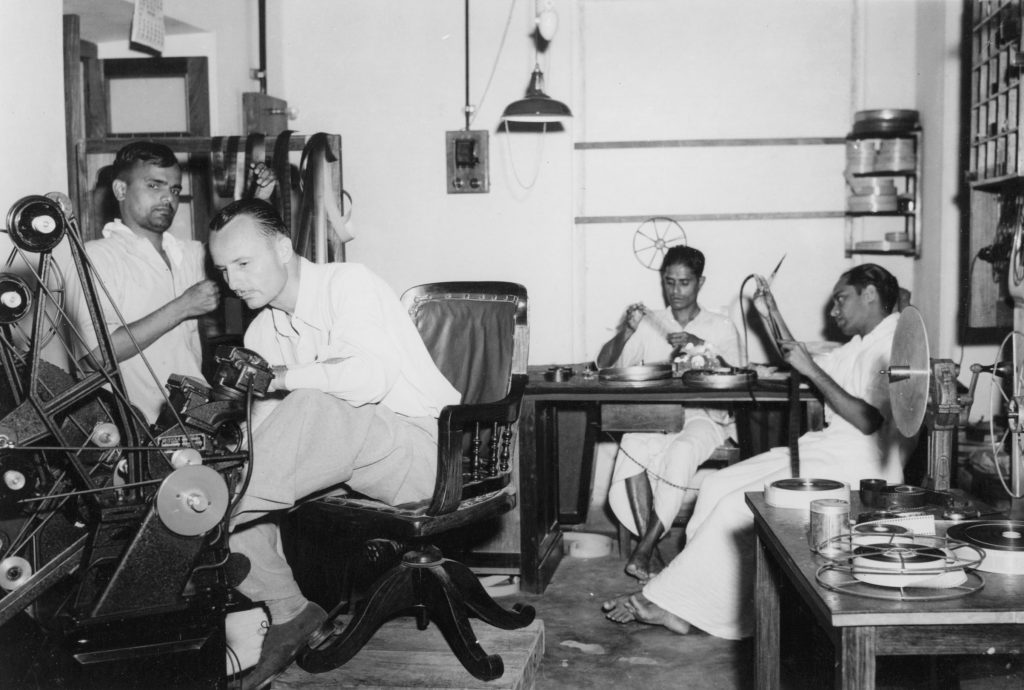The following is an extract from American-born Filmmaker Ellis R Dungan‘s autobiography, A Guide to Adventure, co-written with Barbara Smik recalling the release of one of his most successful films in India, Ambikapathy (1937). The book was published in 2001, the year of Dungan’s death.
Producers in South India had a habit of setting the release dates in the theaters long before the editing was completed. They didn’t realize the extra time required for editing and other post-production services. Often, as was the case with Ambikapathy, the first print, hot out of the processing laboratory, would have to be shipped direct to the theater in order to meet the opening day’s deadline. And sometimes, believe it or not, reels of the picture would be missing, as was the case with this picture. I need to explain here first that I always made it a habit of sitting with the film editor during the final editing sessions and negative cutting of my pictures. You can make or break a feature film in the editing room. Many badly produced films have been saved through good editing, and likewise, good films have been ruined by poor editing.
So… around midnight the editor and I were sitting at the negative cutting table winding and splicing scenes into the negative reels. As my editor was slowly winding away, the poor guy fell asleep and one of the large reels of negative slipped off the rewinder and fell to the floor, hitting the sharp metal leg of the editing table on the way down and making a four inch cut into the picture. I tell you my heart almost stopped beating! We had to make a hundred or so spices which, on projecting a print of the damaged film, flashed every two seconds on the screen. Surprisingly, when the film was released in Madras, there were no complaints from anyone. The audience seemed to enjoy the picture and it became a big hit – a blockbuster. Somehow, the audience overlooked the flashes, probably thinking the fault was in the film projector at the local cinema.
Also, added to this we had twelve reels out of thirteen ready by the release date, leaving one reel missing. It appeared that some of the splices came unglued and the reel had to be returned to the editing room for repairs and reprinting. I was in Calcutta at the time, cleaning up loose ends with the studio and paying bills. Therefore I didn’t know what was happening in Madras the day of the picture’s release at the Gaiety Cinema in Madras, when the film was screened with the eleventh reel missing. From what I learned, the Madras theater audience, which included invited guests and film critics, did not miss the reel. Unbelievably, that picture ran for a week minus the missing reel, and the viewers didn’t know the difference. Much of the absent reel, of about ten minutes duration, consisted of Bhagavathar (Ambikapthy) in a jail sequence, which included a song or two that he sang behind bars. However, his acting and the beautiful music kept the audience enthralled throughout the other twelve reels and the film got rave reviews. After the inclusion of the eleventh reel, the picture continued on its twenty five week run in Madras, breaking all records.
Header photo: Ellis Dungan editing Meera (1945) at Newtone Studios, Madras. Courtesy: The West Virginia State Archives, USA


